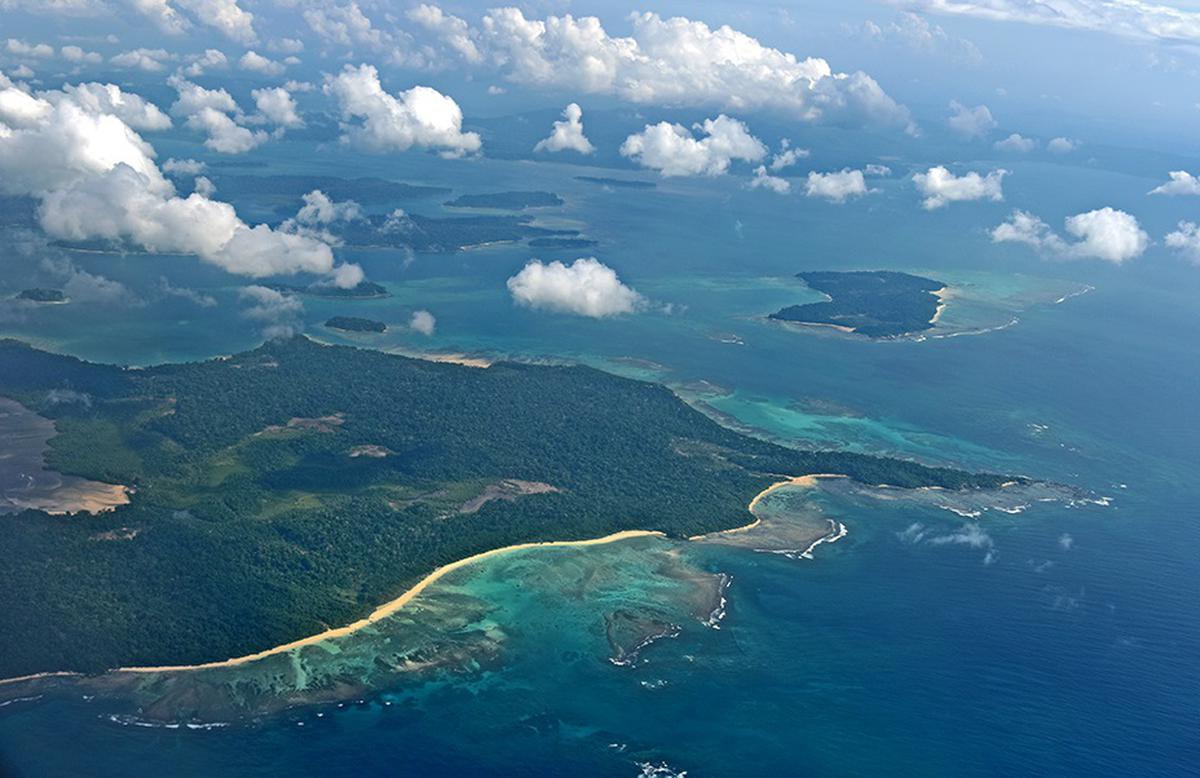- Courses
- GS Full Course 1 Year
- GS Full Course 2 Year
- GS Full Course 3 Year
- GS Full Course Till Selection
- Answer Alpha: Mains 2025 Mentorship
- MEP (Mains Enrichment Programme) Data, Facts
- Essay Target – 150+ Marks
- Online Program
- GS Recorded Course
- Polity
- Geography
- Economy
- Ancient, Medieval and Art & Culture AMAC
- Modern India, Post Independence & World History
- Environment
- Governance
- Science & Technology
- International Relations and Internal Security
- Disaster Management
- Ethics
- NCERT Current Affairs
- Indian Society and Social Issue
- NCERT- Science and Technology
- NCERT - Geography
- NCERT - Ancient History
- NCERT- World History
- NCERT Modern History
- NCERT Medieval History
- CSAT
- 5 LAYERED ARJUNA Mentorship
- Public Administration Optional
- ABOUT US
- OUR TOPPERS
- TEST SERIES
- FREE STUDY MATERIAL
- VIDEOS
- CONTACT US
Great Nicobar Island Project Under Review
Great Nicobar Island Project Under Review

Why in the News?
- The Ministry of Environment Forest and Climate Change (MoEFCC) has submitted a report to the National Green Tribunal (NGT) regarding the environmental clearance of the Great Nicobar Island mega project.
- This report was prepared by a High-Powered Committee (HPC).
- The NGT is reviewing this report because there were concerns about the project’s impact on the environment, especially on coral reefs, forests, and wildlife.
- These cases were filed by environmental activists and researchers who have raised concerns about possible violations of environmental rules in the project.
- In March, the NGT had directed the MoEFCC to submit details about what actions were taken after the high-powered committee (HPC) reviewed the environmental clearance (EC).
What are the Key Highlights?
- Project Overview
- The Great Nicobar Project is worth Rs 81,000 crore.
- It includes
- An international container transshipment terminal
- A township
- A civil and military airport
- A 450 MVA power plant using gas and solar energy
- The project will cover 166 sq km of land.
- It will require diversion of 130.75 sq km of forest land and involve the cutting of over one million trees.
- The project is being implemented by the Andaman and Nicobar Islands Integrated Development Corporation (ANIIDCO).
- High-Powered Committee (HPC) and Its Role:
- The NGT formed a High-Powered Committee (HPC) in April 2023 to address several deficiencies in the environmental clearance process of Great Nicobar Projects.
- Key concerns included
- Coral conservation
- Location of the port in a prohibited coastal area
- Inadequate baseline environmental data
- The NGT did not cancel the environmental and forest clearances already given to the project.
- Findings of the HPC
- The HPC stated that the project’s Environmental Clearance (EC) and Coastal Regulation Zone (CRZ) clearance were legally compliant.
- It clarified that the project site does not fall in any banned or prohibited coastal zone.
- Regarding coral reefs, the HPC cited the Zoological Survey of India and said that 16,510 coral colonies near the project site would need to be moved to another location.
- The HPC submitted its report to the Andaman and Nicobar Island administration with recommendations.
- Government Response and Follow-up Actions
- The Environment Ministry submitted multiple affidavits to the NGT detailing the actions taken.
- An overarching committee was formed in January 2024 to implement the HPC’s suggestions.
- This committee includes:
- Chief Secretary of Andaman and Nicobar Administration
- Representatives from the Wildlife Institute of India (WII), Botanical Survey of India (BSI), Zoological Survey of India (ZSI), and ANIIDCO.
- Funding for Conservation and Welfare Plans
- The Ministry of Home Affairs sanctioned Rs 88.69 crore to Andaman and Nicobar Islands Integrated Development Corporation (ANIIDCO) for the first year of wildlife conservation and a special medical unit.
- The total cost of the environmental management plan is estimated at Rs 9,162 crore.
- As of March, Rs 80.84 crore was released to various institutions and the Andaman Public Works Department (APWD)
- Fund Allocation Details:
|
Institution |
Amount (in crore) |
Purpose |
|
Wildlife Institute of India |
15.72 |
Conservation of leatherback sea turtle, Nicobar megapode, saltwater crocodile |
|
Salim Ali Centre for Ornithology |
24.5 |
Bird hazard risk assessment, conservation of coconut crab and long-tailed macaque |
|
Zoological Survey of India |
23.55 |
Coral reef conservation, management of intertidal marine fauna |
What are the Significances?
- Strategic Significance
- Great Nicobar Island is located close to the Strait of Malacca, one of the world’s busiest shipping lanes.
- Building a major transshipment port here will help India gain strategic control over important maritime routes in the Indian Ocean Region (IOR).
- It will strengthen India's naval and maritime security in a region that is seeing increasing Chinese presence.
- Economic Significance
- The project is expected to turn Great Nicobar into a major trade and logistics hub, reducing India’s dependence on foreign ports like Colombo and Singapore for transshipment.
- It may create thousands of direct and indirect jobs in infrastructure, logistics, tourism, and service sectors.
- The container terminal will improve India’s position in global shipping and reduce logistics costs.
- Infrastructure Development
- The project includes a civil and military airport, which will improve air connectivity to this remote island.
- It also includes a gas and solar-based power plant, helping meet local energy demands and reducing reliance on diesel generators.
- Development of a new township will improve public services like housing, health, education, and transport on the island.
- Boost to National Security
- Strengthening civilian and military infrastructure will allow the Indian Navy and Coast Guard to monitor strategic sea routes more effectively.
- It acts as a forward operating base for India in the Andaman Sea and the Bay of Bengal.
- Regional Development
- The project is expected to bring economic development to remote islands, especially Great Nicobar, which has remained underdeveloped for decades.
- It will improve the quality of life for local residents and promote connectivity with the mainland.
- Potential for Tourism and Research:
- With better connectivity and infrastructure, the island could emerge as a destination for eco-tourism and marine tourism.
- The region, rich in biodiversity, may also see more scientific research opportunities in marine and forest ecosystems.
What are the Challenges and Way Forward?
|
Challenges |
Way Forward |
|
1. Environmental destruction: Over 130 sq km of forest will be cleared, and more than 1 million trees may be cut. |
Follow strict environmental safeguards and minimize forest clearance through careful design changes. Use compensatory afforestation meaningfully. |
|
2. Threat to biodiversity: Endangered species like leatherback turtles, Nicobar megapode, and coral reefs are at risk. |
Ensure proper implementation of species-specific conservation plans. Involve experts from WII, ZSI, and SACON to monitor progress. |
|
3. Displacement of tribal communities: Indigenous Shompen and Nicobarese tribes may be affected. |
Respect the Forest Rights Act and provide full consent-based rehabilitation. Ensure their cultural and livelihood needs are protected. |
|
4. Coastal ecosystem damage: Port construction may disturb fragile coastal and marine ecosystems. |
Conduct fresh, detailed ecological impact assessments and regularly monitor the health of marine ecosystems. |
|
5. Limited public consultation: Local voices and concerns have reportedly been overlooked. |
Ensure transparent and participatory decision-making. Hold regular consultations with local communities, researchers, and environmentalists. |
|
6. Coral translocation risks: Moving over 16,000 coral colonies is a delicate process and may fail. |
Follow global best practices in coral relocation and continuously monitor the health of transplanted corals. |
|
7. Cost and financial burden: The total environmental management plan cost is estimated at ₹9,162 crore. |
Ensure phased and efficient utilization of funds. Prioritize spending on mitigation, conservation, and tribal welfare. |
Conclusion
The Great Nicobar project is a large and complex development plan with major strategic and economic benefits. However, it also poses serious environmental challenges. While the government has taken steps to address these concerns through expert committees, funding, and planning, careful monitoring, transparency, and community participation will be essential to ensure a balanced and sustainable outcome.
National Green Tribunal (NGT)
|
|
Ensure IAS Mains Question Q. The Great Nicobar Island Mega Infrastructure Project aims to boost India's strategic and economic presence in the Indo-Pacific, but it raises significant environmental and social concerns. Critically examine the project's significance, major challenges, and suggest a balanced way forward. (250 Words) |
|
Ensure IAS Prelim MCQ Q. With reference to the Great Nicobar Island Mega Infrastructure Project, consider the following statements
How many of the above statements are correct?
Answer: c Explanation Statement 1 is correct: The project includes a transshipment port, airport (civil + military), township, and a power plant. Statement 2 is correct: The HPC, citing ZSI, recommended relocating 16,510 coral colonies. Statement 3 is incorrect: The project requires forest clearance as well; over 130.75 sq km of forest is to be diverted. Statement 4 is correct: The Andaman and Nicobar Islands Integrated Development Corporation (ANIIDCO) is the implementing agency. |
|
Also Read |
|
| FREE NIOS Books | |




